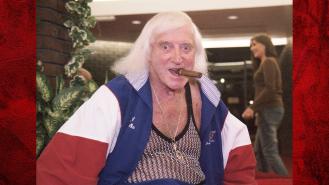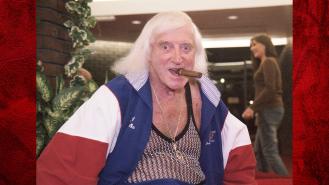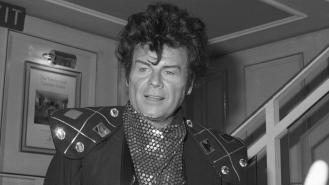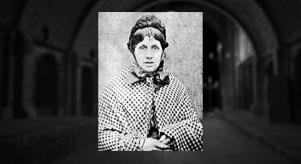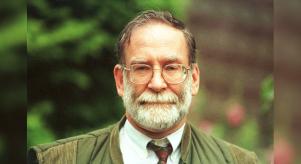
4 reasons Jimmy Savile got away with his crimes
He was the national treasure who was outed as one of Britain’s worst ever sexual predators, but the truth came too late for Jimmy Savile to face justice. So what were the factors that helped him carry out his crimes with such impunity, and retain his reputation as a much-loved showman to the day he died?
1. His times
Savile was active in an era of blasé attitudes which, thankfully, are becoming increasingly less common in these post-#MeToo times. It was an era when a man could freely and repeatedly mingle, unaccompanied and unquestioned, with young people, commit brazen acts of abuse, and be sure that his victims would either be disbelieved or outright ignored.
Take the story of one victim, known as Jane, who was targeted by Savile when she was a teenage patient at Leeds General Infirmary. Incredibly, she was literally delivered to Savile by a hospital porter, who led her to a room where he was waiting alone, and promptly assaulted her for five or six minutes. Jane reported the attack to nurses, who simply laughed it off. ‘All the staff accepted it, patients accepted it, clearly the porters accepted it as well,’ she later told the BBC.
What we’d now recognise as predatory behaviour was openly accepted as a fact of life, especially in the hedonistic showbiz universe in which Savile operated. A report by former High Court judge Dame Janet Smith found that Savile had abused and raped numerous people at ‘virtually every one of the BBC premises at which he worked’. The widespread ‘culture of not complaining’ meant that senior managers weren’t formally notified of allegations.
One of Savile’s favourite stalking grounds was Top of the Pops, which, in the words of one floor manager, had an ‘extraordinary mixture of sleaze and innocence’. The Smith Report indicated that men preying on young girls in the Top of the Pops audience was utterly normalised.
In Smith’s words: ‘The most important and obvious reason why what Savile was doing was not recognised was the general environment of the programme… In this testosterone-laden atmosphere where everyone was, in theory at least, over the age of 16, child protection was simply not a live issue.’
2. His star power
The scale of Savile’s celebrity is hard to fathom by anyone who didn’t grow up during his peak decades. Presenting the very first episode of Top of the Pops in 1964, he rode the wave of that decade’s countercultural boom, mingling with The Beatles and The Who on TV. In the 70s he launched Jim’ll Fix It, which ran for decades and cast him in the role of a generous granter of wishes for the nation’s children. The show was a cultural phenomenon, cementing Savile’s status as a national treasure.
Moreover, Savile cultivated friendships with some of the most powerful and respected people in the country. Famously pally with Margaret Thatcher, he was also close to the Royal Family.
Savile was able to wield his immense star power like a weapon, dazzling those who crossed his path, gaining privileged access to whatever spaces he wanted – including children’s homes and hospitals. His much-vaunted ‘eccentricity’ also helped, allowing him to hide in plain sight. As Jonathan Jones of The Guardian put it: ‘He flaunted an unusual personality like a brassy shield.’
3. His charity work
Another of Savile’s shields was the fundraising he did for good causes. In the words of psychiatrist Raj Persaud: ‘Charitable work in malevolent hands could be a form of grooming, because it seems one of the most reliable ways of generating an aura of trustworthiness.’ Savile generated just such an aura by raising millions for good causes, famously running marathons and setting up his own charities.
As well as bolstering his reputation as a valued pillar of society, his charity work gave him an excuse to be around vulnerable young people. For example, his highly publicised connection with Stoke Mandeville Hospital gave him free rein to prey on dozens of people, including patients, staff, and even those visiting loved ones. One nurse who was assaulted while working there recalled that she was ‘too embarrassed’ to report it because he was ‘one of the team’ and everyone was ‘in awe’ of him.
As Kate Lampard, author of a review of Savile’s activities, later said: ‘He used the opportunities that that access, influence and power gave him to commit sexual abuses on a grand scale.’
4. Police incompetence
It’s a common misconception that victims only started reporting Savile after his death. In fact, complaints were made throughout his broadcasting career. According to a damning 2013 report by Her Majesty’s Inspectorate of Constabulary, police responded to a 1963 rape allegation by telling the victim to ‘forget about it’, while a letter warning police about Savile in 1998 was never followed up.
More missed chances came in the noughties, a stark example being a 2008 complaint made to Sussex police about a historical assault by Savile. The Independent Police Complaints Commission later found that detectives failed to properly pursue these allegations. Worse still, the victim told the IPCC that some detectives were openly dismissive of her claims, warning her that Savile’s lawyers would make ‘mincemeat’ of her.
An official review published in 2013 found that there had been, in the words of then-Director of Public Prosecution Keir Starmer, ‘errors of judgement by experienced and committed police officers’. As a consequence, despite a cluster of allegations in 2007 and 2008, no prosecution was brought against Jimmy Savile.
